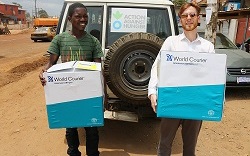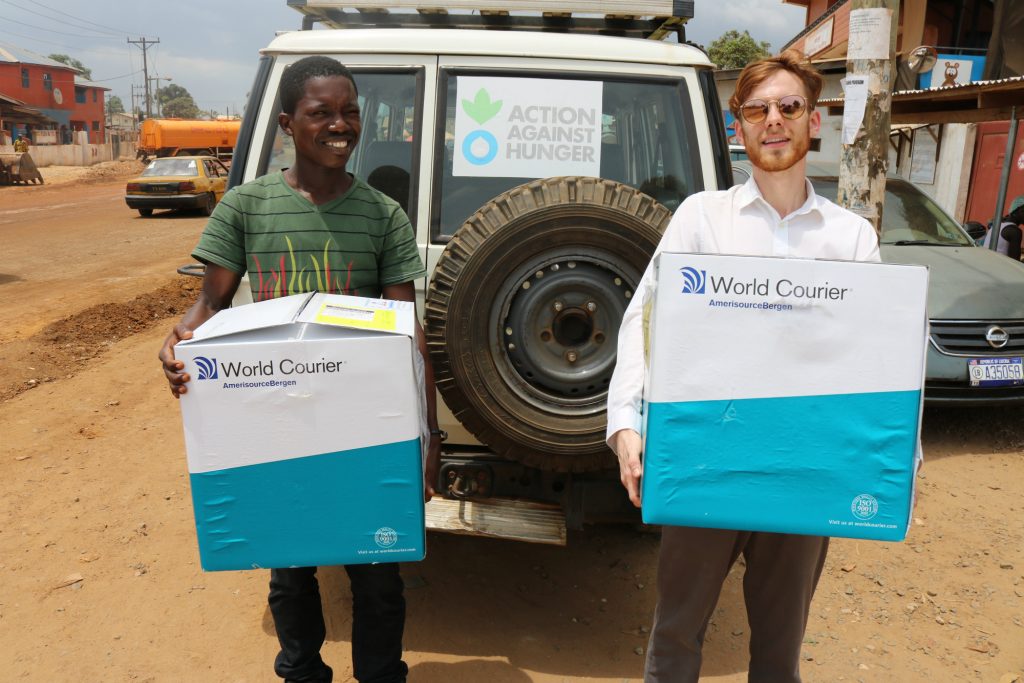Shaping the future: Our strategy for research and innovation in humanitarian response.

Shaping the future: Our strategy for research and innovation in humanitarian response.


It is with great pride that Action Against Hunger can announce the OptiDiag project’s successful on-the-field data collection in Bangladesh, Burkina Faso and Liberia.
To remind readers, the OptiDiag project was started in May 2015, with the aim to fill a priority research gap with new, robust scientific evidence to characterise vulnerability in children with severe acute malnutrition (SAM). Doing so will provide policy makers with the evidence-base they need to rationally target the most vulnerable SAM children for treatment.
Today, the World Health Organisation (WHO) recommends two anthropometric tools, mid-upper arm circumference (MUAC) and weight-for-height Z-score (WHZ) to diagnose SAM. However, the use of MUAC only for diagnosis, and the abandonment of WHZ, is increasingly applied. Doing so restricts the humanitarian target, disqualifying WHZ SAM children from access to treatment; these children often represent the majority of the SAM case load, particularly in the Sahel and South East Asia where much of the SAM burden of disease clusters. The rationale for this is based on practical arguments on the ease-of-use of MUAC compared to WHZ, and backed by scare scientific evidence.

The OptiDiag project will further the scientific discussion on risk and need associated with malnutrition and help shape the global public health policies designed to target and save these children. Our results will help policy makers decide if the abandonment of WHZ (and the enormous large caseload of malnourished children globally it represents) is ethically justified.
PROJECT
The anthropometric tools explained above are widely and successfully used to evaluate health and nutritional risk, especially in children. However, anthropometric measurements do not give direct information on what is going on inside the body of SAM patients—they are only proxy measures for an underlying clinical condition that is difficult to assess.
Unfortunately, the local infrastructure and poor technological capacity in countries burdened with SAM make its such that we must rely on the use of anthropometry to describe the clinical status of malnourished children. However, abnormal anthropometry does not provide direct etiological information on the clinical, nutritional or metabolic status. Sophisticated medical diagnostic technology to assess a broad range information (i.e. deficiencies and/or abnormalities in hormones, cytokines, growth factors and metabolites, etc.) would be ideal, but this is entirely unavailable and cost prohibitive in the reality of the field setting today.
We chose to try and bring a more sophisticated diagnostic technology to the field, to directly evaluate the vulnerability of our patients at key time points during treatment: at admission, after 2 weeks, and around the time of discharge. At these key moments we collected information on leptin, a hormone secreted by the adipose tissue which has been correlated with risk of death among SAM children in a previous study. In doing so, we tried to develop and pilot a novel rapid assay for leptin.

Aside from leptin, we collected bioelectrical impedance parameters, which is another emerging bedside technology used in the clinical assessment of malnourished children, as well as panel of 17 additional biomarkers, each of which would provide us with one small piece of the puzzle vis-à-vis the patient’s clinical status. Our choice ranged from biomarkers of micronutrient deficiency, body composition and energy metabolism, to non-specific immune response and infection.
In addition to our clinical samples, we also collected a wide range of additional data on the caretakers’ perception of her child’s health and nutrition status, the health history of our patients, their clinical evolution, weight gain, recovery speed and relapse rate.
DESIGN
Apart from the development and piloting of the rapid assay technology for leptin assessment, the core of the OptiDiag project consisted of a multi-centric, longitudinal, descriptive epidemiological study conducted on SAM children aged 6 – 59 months in Cox’s Bazar, Bangladesh, Fada N’Gourma, Burkina Faso, and Monrovia, Liberia.
POPULATION
We selected these three countries to generate a representative population of SAM children as they are present on the field today. Our sample controlled for geographical determinants like urban (Liberia), semi-urban (Burkina Faso) and rural locality (Bangladesh) as well as ethnic morphology (African versus Asian body type).

SAMPLE
After one year of field implementation we managed to recruit a total of 468 patients—144 in Bangladesh, 173 in Burkina Faso, and 151 patients in Liberia!
CHALLENGES/SUCCESSES
We owe our overwhelming recruitment success in large part our team, without which this project would not have been possible. The OptiDiag project was a truly ambitious, complex and sometimes painfully challenging endeavor both technically and logistically. But our international team, spanning 10 countries and 3 continents (and including scientists, physicians, nurses, nutritionists, public health professionals, nurse assistants and nutrition research workers) bound together to lead our recruitment effort to success!
WHAT’S NEXT!?
The OptiDiag project was designed to produce extremely valuable evidence that fills a priority research gap in the field of humanitarian nutrition; it is therefore immensely important that the we succeed in our uptake and diffusion strategy, and that our key stakeholders have access to the evidence produced, understand it, trust it, and are able to apply it to policy and practice. These key stakeholders include: international academics, technical groups/platforms, humanitarian organizations, policy makers, and donors, national/local partners and advocacy platforms.
Our research communication strategy is aimed to synthesize evidence and results in formats that are specifically tailored to the key stakeholder audience listed above. While peer-review publication is a critical priority, we plan to develop a broad range of communication outputs adapted to the target audience for maximum impact, other than peer-review publications, including: conferences, presentations, stakeholder workshops, journal articles, policy briefs, newsletters, social media, blogs, and community-level engagement events, etc.—available within the next year.
The ground has never been more fertile to improve our clinical understanding, to harness the technology of today, to push diagnostic solutions for malnutrition into a future era. We hope that our highly anticipated results will help assess the power of current treatment programs to identify, diagnose and promote growth and recovery based on the true needs of malnourished children around the world.

 Please upgrade your browser
Please upgrade your browser
You are seeing this because you are using a browser that is not supported. The Elrha website is built using modern technology and standards. We recommend upgrading your browser with one of the following to properly view our website:
Windows MacPlease note that this is not an exhaustive list of browsers. We also do not intend to recommend a particular manufacturer's browser over another's; only to suggest upgrading to a browser version that is compliant with current standards to give you the best and most secure browsing experience.